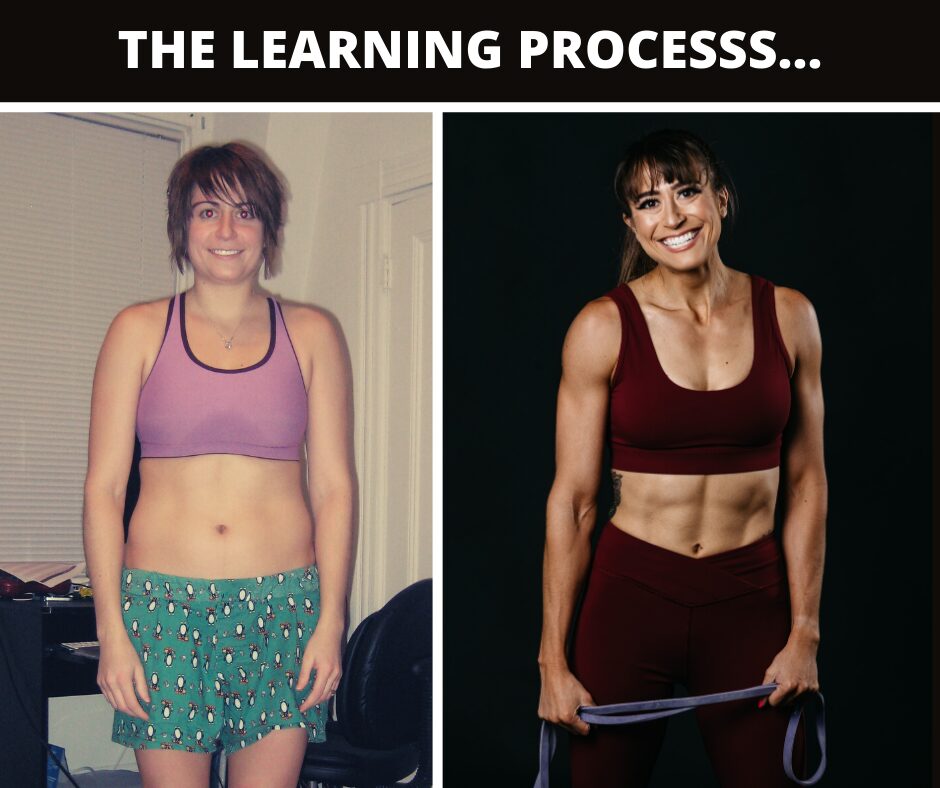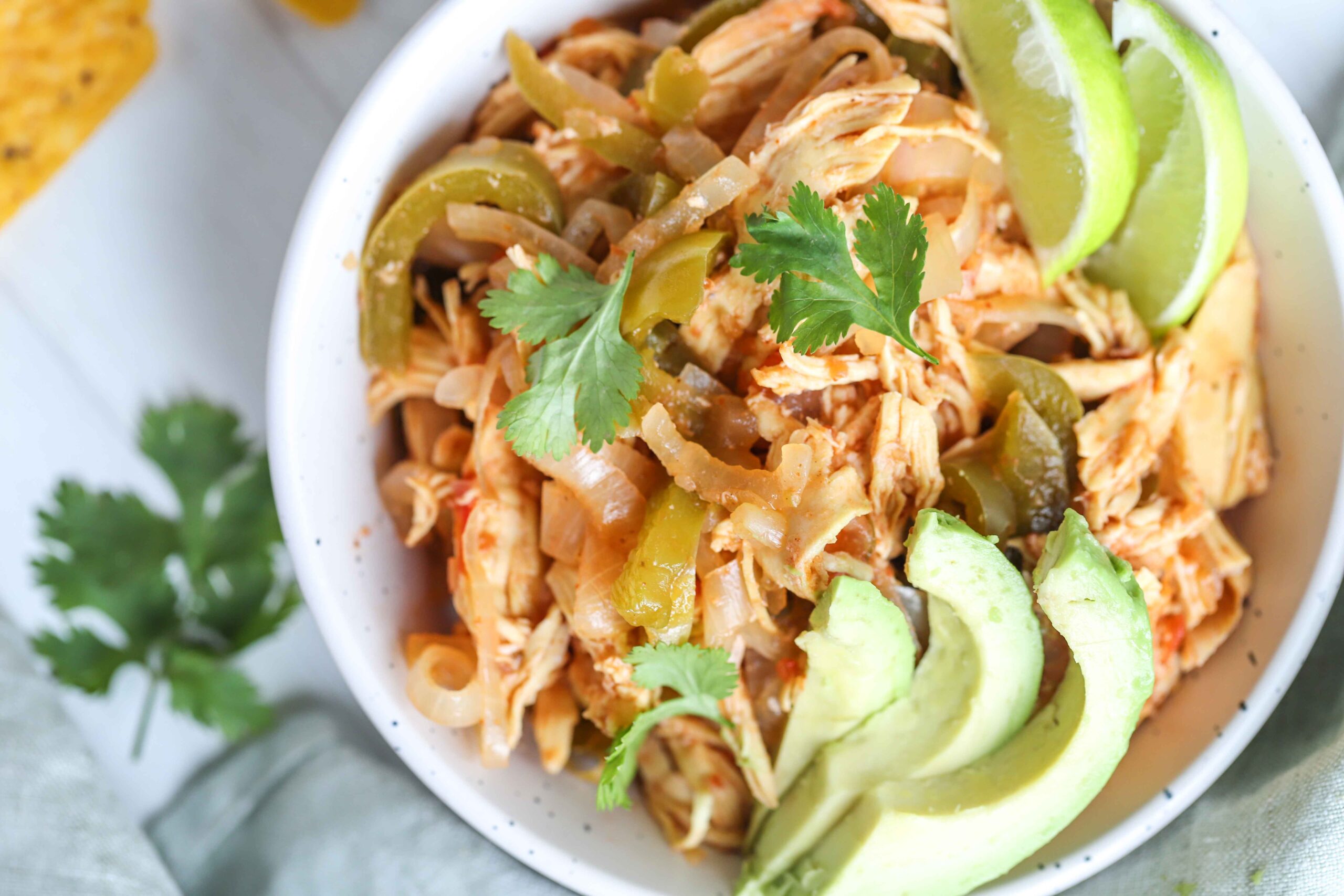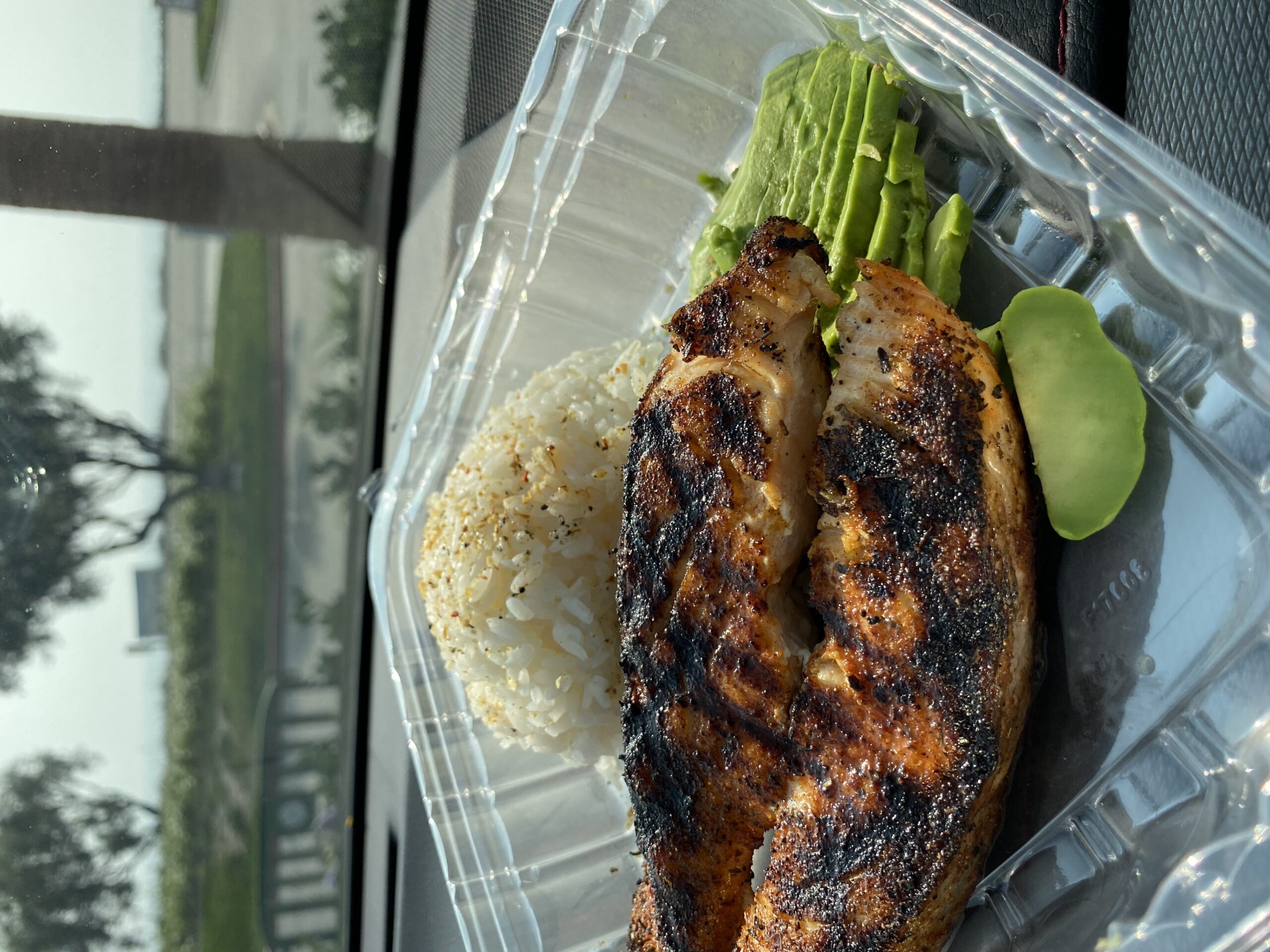
The Best Meal Plan To Lose Fat Faster (TRY THIS!)
No matter how much we may try, we can’t out exercise our diet. Trust me, I’ve tried.
If we want the best, and fastest fat loss results possible, we need to dial in our diet to complement our workouts.
That’s why today I want to take you through a typical day of eating that helped me transform from this to this, but before I do, let’s take a look at what truly makes a diet effective for fat loss….

Now the question is, what diet is the BEST when it comes to fat loss?
Daily it seems a new diet arises claiming to be the secret to all of our struggles. They promise us fast fixes. Instant results.
But if it sounds too good to be true?
Guess what, it is!
No matter what dietary preference you choose, from Paleo to Vegetarian to Low Fat to Keto, macronutrients and how you create your calorie deficit through your macro breakdown, is what makes the diet truly work.
There are no magic fat loss foods.
And cutting out whole foods groups just because someone said to isn’t a sustainable plan, especially if you happen to love the food you have to cut out!
If you want lasting fat loss results, you’ve got to dial in your macros to create a calorie deficit that keeps you feeling fueled while still allowing you to enjoy the foods you love.
Because if your diet feels like a horrible chore and if it doesn’t fit your lifestyle?
No matter how healthy it is? You aren’t going to be able to stick with it.
And fat loss requires consistency with your plan!
The key is finding something that doesn’t cause you to feel super restricted so that you want to rebel.
As you create the perfect plan for you, consider these 4 key things…
KEY FACTORS FOR CREATING YOUR MEAL PLAN:
#1: Create a smaller calorie deficit.
While it’s so tempting to try to do more to speed up results, like working out harder while eating less, this aggressive calorie deficit will ultimately backfire, especially the closer you are to your goal.
Not only can it lead to us feeling hungry and moody, or as I like to say HANGRY, but it can also cause us to catabolize more muscle tissue and actually lose fat slower.
It can lead to hormonal issues and quicker metabolic adaptations.
And often, simply the fact that we always feel hungry, can cause us to give up on the plan.
So if you want to maximize your fat loss while minimizing muscle loss, don’t go too aggressive with the calorie deficit.
While conventional wisdom says to cut your maintenance calories by up to 500 per day to lose 1lbs per week (which is safe and sustainable weight loss), you may start with a more moderate deficit especially to start of only 250 calories.
Even consider adjusting your macro ratio BEFORE you really start slashing calories lower because as much as we are told they are, calories are NOT all created equal.
#2: Focus on protein first.
While yes, weight loss in its simplest form is about calories in vs calories out, only focusing on a calorie deficit, can often lead to lackluster results.
Studies have shown that not only can increasing protein lead to better fat loss results, even while in a calorie surplus, but increasing protein can also help you retain and even GAIN muscle while in a deficit.
By focusing on getting more protein with each meal, you can help yourself achieve better body composition while feeling full and fueled in part due to the higher thermic effect of protein, which helps increase energy expenditure and create that calorie deficit.
So don’t fear getting “bulky” by adding in more protein. It may be what you need to actually look leaner!
#3: Adjust carbs and fat based on your workout routine and what you enjoy.
While so many popular diet emphasize adjust carbs or fat, studies have shown that, when protein is kept constant, neither a lower fat diet or a lower carb diet is really superior. That actually what impacts the results seen in the studies is the amount of protein, with the higher protein ratio almost always coming out superior.
How you adjust your carbs and fats may be dependent on the type of training you do, your overall activity level and simply the types of foods you enjoy. Specific medical conditions may even make one optimal for you and your health.
The key is making sure you feel fueled and that you can SUSTAIN the plan you choose. Choosing to go no carb if you love carbs will ultimately backfire.
And you’re an endurance athlete, for instance, you won’t want to cut your carbs super low. Whereas if you aren’t really training intensely, or even at all right now, you may want to decrease carbs and instead go slightly higher fat.
#4: Plan in foods you love.
When most of us start making diet changes, often the first thing to go is the food we love the most – our salty snack or sweet treat.
We cut this food out because we know it isn’t good for us.
However, this often backfires as it’s also the thing we want the most and we therefore miss having it in our diet.
So when we do indulge because we can’t take the restriction any longer? We often overeat.
That’s why it is key we find either healthy alternatives that satisfy us OR even start by planning in that food we love first.
The diet that will be most sustainable, and ultimately help us achieve the best results, is the one that helps us lead a healthier version of OUR lifestyle – not one that tries to live up to someone else’s standard of “clean.”
Because I’m a dessert person, I will often plan in the dessert I’m craving FIRST and work backward from that meal. That way I can hit my ratios, make tweaks to other meals but also not feel restricted.
So when first starting out, strike that balance and don’t feel you have to cut out things you enjoy. Work around them while maybe adjusting things you aren’t as attached to.
So what does a typical day of eating look like for me?
(Ready to create a sustainable plan based on YOUR needs and goals? Book a strategy call with Redefining Strength TODAY! –> Book Now)
A Typical Day Of Eating:
When cutting I like to cycle ratios every one to two weeks. Often I will repeat 40/30/30 or 40% protein, 30% carbs and 30% fat a few times throughout my fat loss phase. I like to set a calorie range from 1600-1700.
This means I consume between 160-170g of protein, 120-128 g of carbs, 53-57 g of fat per day.
I like to keep meal prep simple, repeating a handful of meals over the week. This keeps grocery shopping and even planning ahead quick and easy.
Studies have even shown that potentially more variety in your diet is associated with overeating and weight gain.
Plus, when you repeat the same meals and can even prep ahead of time, you have quick and easy options on hand when you’re stressed or busy and often tempted to reach for something not as healthy or inline with your goals..
I will even include a few restaurant meals in my planning so that I can have quick and healthy swaps when on the go.
One other quick side note about MEAL TIMING I’d like to mention…
You have traditional bodybuilding on one side that swears by 6 small meals a day. On the other side you have Intermittent Fasting and diets that often will even promote 1-2 meals a day to help you create that calorie deficit.
Both claim that their specific meal timings is key for fat loss.
My personal stance is to focus on fueling based on YOUR schedule. If you workout first thing in the morning at 5 am, fasting till 1 pm may be a horrible idea.
While forcing yourself to eat breakfast if you like sleeping late and skipping it, may also just lead to you overeating.
For me, I often like to fast till after my workout and then consume 2 smaller and 2 larger meals during the day. However, I never force myself to skip a meal if I’m hungry.
Pre-Workout:
My day of eating starts with just a black cup of coffee.
I’ll usually drink a cup or two an hour or so before I workout as caffeine has been shown to enhance training performance both for cardio and strength workouts.
It’s the only energy “supplement” I will personally ever take or ever even promote to clients if they ask about a pre-workout.
Coffee not only can give me that boost for my workout, but it has also been shown to aid in fat loss, increasing your metabolic rate. Studies have shown that consuming caffeine can promote better weight loss through thermogenesis and fat oxidation.
After my workout, I’ll eat my first meal. I usually try to eat this within an hour of finishing my training to make the most of that post-workout anabolic window.
Meal #1 (Post workout):
Because this is a post workout meal, I focus on a quick digesting protein as well as a great carb source to replenish muscle glycogen and promote better muscle protein synthesis.
While your overall macros for the day are the most important, this is a great way to optimize your recovery while maintaining muscle in a calorie deficit.
My go-to is Oatmeal, a scoop of whey protein and berries. This meal is filling while getting my muscles what they need. And it’s an easy one to take on the go as well.
Meal #2 (Lunch):
For lunch I like to have something prepped ahead of time so I don’t have to cook midday.
One of the best tools out there for meal prep, is the slow cooker. Set it and let it do the cooking for you for the week.
You can prep a ton of meat ahead of time to use in different things.

I love to prep a 5 ingredient Slow Cooked Chicken Fajitas from my Lazy Kitchen cookbook. I can then use the meat for tacos, in a burrito bowl with rice on a salad or even on a baked potato depending on what other meals that day I’m pairing it with.
For 40/30/30 I really love the baked potato because it is also super filling. I’ll top that mixture with 2 tbsp of guacamole for some added healthy fats.
Meal #3 (Dinner):
For dinner, I’ll often focus more on just a simple protein and veggie based meal.
Each week I try to include a couple of meals with fish or fresh seafood for not only the healthy fats, but also micronutrient benefits, including Vitamin D, Vitamin B12, Iodine, and Selenium.
While we can see amazing results hitting our macros even if we include some…well…not as quality fuel, we promote optimal functioning of our body and therefore the best possible results when we focus on not only our macros but also our micronutrient intake.
Salmon is one of my favorite fish to include. I like to blacken it in the airfryer with even some basic garlic steamed broccoli.
Steaming vegetables is a great way to help them maintain as much of their nutritional value as possible.
Because I don’t like cooking fish often, I may even go out to one of my favorite local spots, Bear Flag to get this meal done for me. Having those quick go-to meals out is a great way to stay on track while still getting to relax and not have to worry about meal prep!

Meal #4 (Dessert):
I grew up having dessert every night. And in the past when I would go on a diet, this would be the first thing to go. But that’s why nothing was ever sustainable.
Now I always include dessert to strike that balance right for me.
To start I would even work backward, planning in dessert first to make sure I could hit my macros with my other meals.
Right now I’m loving vanilla greek yogurt with granola and peanuts. I don’t worry about when I eat this at night. I know there’s a popular meal timing myth saying you’ll gain fat if you eat late at night, but that simply isn’t true.
If you hit your calories and macros for the day, it doesn’t matter if you eat them later at night!
I find this last meal of the day helps me avoid getting hungry and allows me to fast till my workout the next day.
CLOSING THOUGHTS:
Remember the key to losing fat is creating a diet plan you can be consistent with.
Don’t slash your calories so low you become hungry.
And make sure to focus on hitting your macros while including foods you enjoy.
For quick and easy recipes, that all scan into my fitness pal, check out my cookbook collection at RSChef.com!
STUDIES:
– https://academic.oup.com/ajcn/article/103/3/738/4564609
– https://pubmed.ncbi.nlm.nih.gov/22150425/
– https://www.ncbi.nlm.nih.gov/pmc/articles/PMC4022420/
– https://www.ncbi.nlm.nih.gov/pmc/articles/PMC4617900/
– https://www.ncbi.nlm.nih.gov/pmc/articles/PMC524030/
– https://academic.oup.com/ajcn/article/87/5/1558S/4650426
– https://pubmed.ncbi.nlm.nih.gov/29466592/
– https://pubmed.ncbi.nlm.nih.gov/22935440/
– https://www.apa.org/pubs/journals/releases/bul1273325.pdf
– https://pubmed.ncbi.nlm.nih.gov/28409508/
– https://pubmed.ncbi.nlm.nih.gov/28537195/
– https://www.ncbi.nlm.nih.gov/pubmed/30629046
– https://pubmed.ncbi.nlm.nih.gov/30335479/
– https://pubmed.ncbi.nlm.nih.gov/7369170/
– https://pubmed.ncbi.nlm.nih.gov/16076989/
– https://www.ncbi.nlm.nih.gov/pmc/articles/PMC6142015/
– https://jissn.biomedcentral.com/articles/10.1186/s12970-015-0109-4
– https://www.ncbi.nlm.nih.gov/pmc/articles/PMC6642616/


